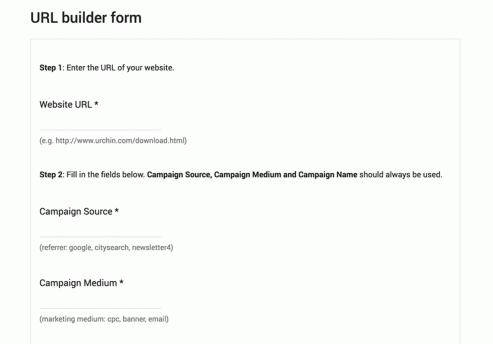No matter which email provider you use, you have the opportunity to track the direct return on investment your emails are bringing in for your business. If you’re not paying attention to this information, you won’t know how to adjust your marketing efforts to get more bang for your buck.
If you have a Google Analytics account setup for your website, you can follow these simple steps to start tracking your email revenue. Please keep in mind that depending on your email provider, many offer integrations with analytics programs that you may want to check into first.

Track Email ROI With Google URL Builder
- Open up the URL builder
- Fill in your website address, campaign source (newsletter name or campaign type), campaign medium (email) and campaign name (this is what you’ll see in Google Analytics so use naming conventions you’ll understand when looking at your data later).
- Generate your URL
- Copy everything after the “?”, including the “?”. Example: ?utm_source=weeklynews&utm_medium=email&utm_campaign=060116-Organics
- Add this string of code to the end of every URL in your email. This will allow your links to be tracked in Google Analytics.
Once you’ve sent out your newsletter, if a subscriber clicks on any of the links you’ve added this tracking code to, you’ll be able to see how much revenue was made (if you are selling products on your website), how many pages they visited, the number of transactions made and more.
Understanding the dollar amount is much more valuable than click-throughs and open rates alone. Taking all three into consideration, you can learn which campaigns are the most successful for your organization and take steps to replicate your efforts with similar campaigns.
Happy emailing!





